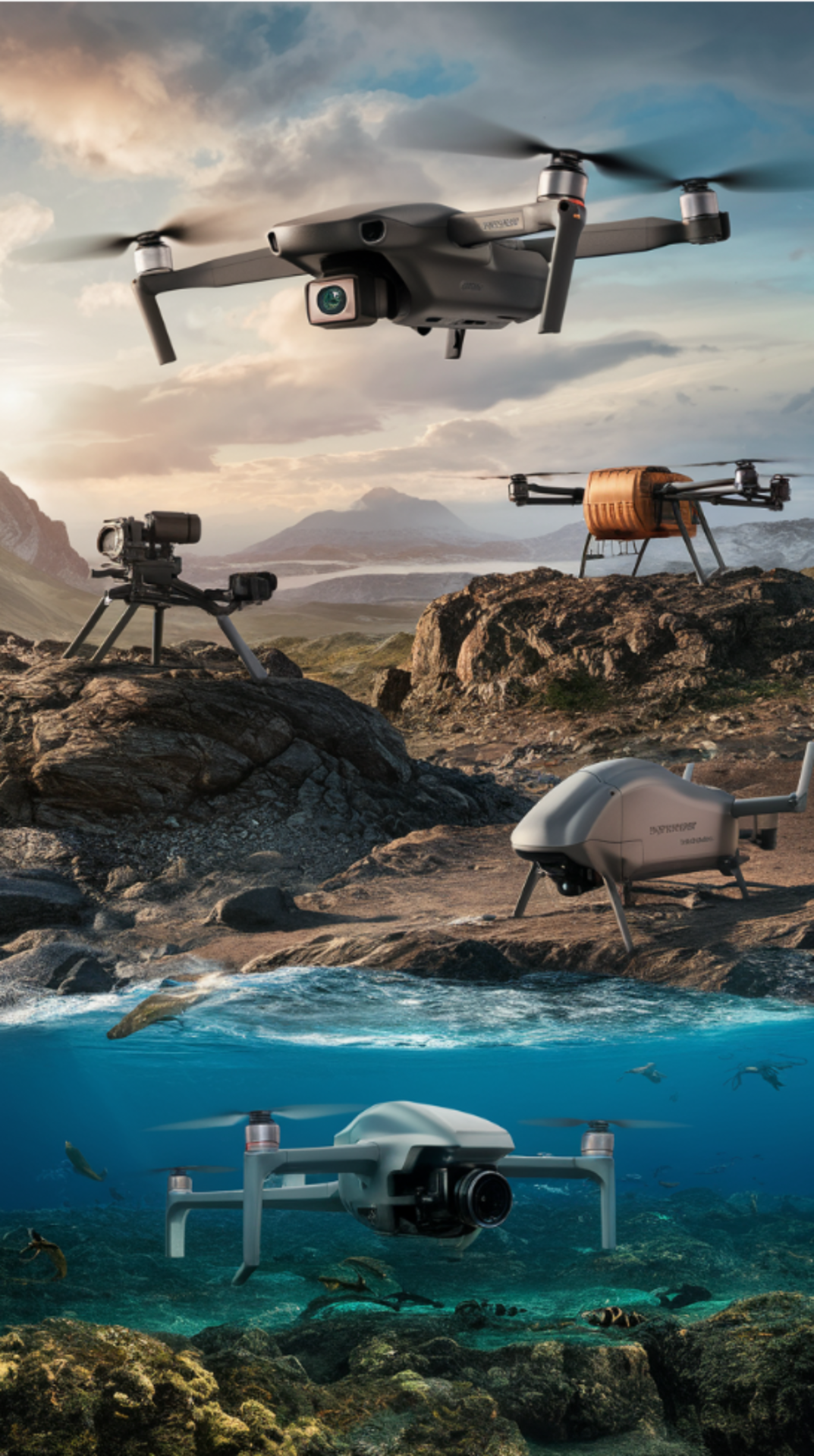This post may contain affiliate links. As an Amazon Associate, we may earn commissions from qualifying purchases.
Introduction
Drones, including unmanned aerial vehicles (UAVs), unmanned ground vehicles (UGVs), and unmanned underwater vehicles (UUVs), are increasingly utilized globally across various sectors. Understanding the diverse regulatory landscapes outside the EU, UK, and USA is essential for safe and compliant drone operations. This guide outlines key regulations in several major regions for aerial, land, and sea drones.
Aerial Drones
General Trends and Regional Regulations
Aerial drone regulations vary widely around the world, often overseen by national aviation authorities. Here are some key examples:
- Australia:
- Civil Aviation Safety Authority (CASA) regulates drone operations.
- Categories:
- Micro (under 250g): No registration required, basic safety rules apply.
- Very Small (250g – 2kg) and Small (2kg – 25kg): Requires registration and operator accreditation for commercial use.
- Operational Rules: Fly below 120 meters, within visual line of sight, away from people and restricted areas.
- Canada:
- Transport Canada oversees drone regulations.
- Categories:
- Basic Operations: Drones weighing 250g to 25kg, operating in controlled environments.
- Advanced Operations: Includes flying near people, in controlled airspace, or beyond visual line of sight, requiring additional certification.
- Registration and Training: Mandatory for drones over 250g, with a pilot certificate required.
- Japan:
- Japan Civil Aviation Bureau (JCAB) manages drone regulations.
- Requirements: Registration for drones over 200g, remote pilot license for certain operations, and permission for flying in populated areas or beyond visual line of sight.
- Operational Rules: Fly below 150 meters, avoid crowds, and keep a safe distance from airports.
- India:
- Directorate General of Civil Aviation (DGCA) regulates drones.
- Categories:
- Nano (up to 250g): No registration required, but restricted to certain operational conditions.
- Micro (250g – 2kg) and larger: Registration required, with different permissions based on size and intended use.
- Operational Rules: Fly below 120 meters, within visual line of sight, and avoid no-fly zones.
Land Drones
Regional and National Regulations
Regulations for land drones or UGVs vary depending on their use:
- Australia:
- Autonomous Vehicles: Regulated by the National Transport Commission (NTC). Trials and deployments require state-level approval and must adhere to safety standards.
- General Use: Must comply with local safety and privacy laws.
- China:
- Autonomous Vehicles: Governed by the Ministry of Industry and Information Technology (MIIT) and local governments. Testing on public roads requires permits and adherence to stringent safety protocols.
- Operational Guidelines: Focus on ensuring safety, reliability, and data security.
- South Korea:
- Korea Transport Institute (KOTI) and local governments regulate autonomous vehicles.
- Testing and Deployment: Requires government approval, with an emphasis on safety, cybersecurity, and infrastructure compatibility.
Sea Drones
Maritime and Environmental Regulations
Sea drone regulations focus on safety, environmental protection, and data security:
- Australia:
- Australian Maritime Safety Authority (AMSA) regulates UUVs.
- Operational Rules: Ensure UUVs do not interfere with manned vessels, comply with environmental protection laws, and adhere to maritime safety standards.
- China:
- Maritime Safety Administration (MSA) oversees UUV regulations.
- Requirements: Operators must obtain permits, conduct operations in designated areas, and ensure compliance with environmental and safety regulations.
- Singapore:
- Maritime and Port Authority (MPA) regulates the use of UUVs.
- Guidelines: Focus on safe navigation, preventing interference with shipping lanes, and protecting marine environments.
Conclusion
Navigating the regulatory landscape for drones globally requires a comprehensive understanding of regional and national regulations. Whether operating aerial, land, or sea drones, compliance with local laws and guidelines ensures safety and legality. Staying informed about updates and adhering to best practices will help drone operators worldwide conduct their activities responsibly and securely.
*Note that the reader must check with and be aware of all current laws and regulations pertaining to drone use in the country of their residence. This is not a legal document and is for guidance only.

